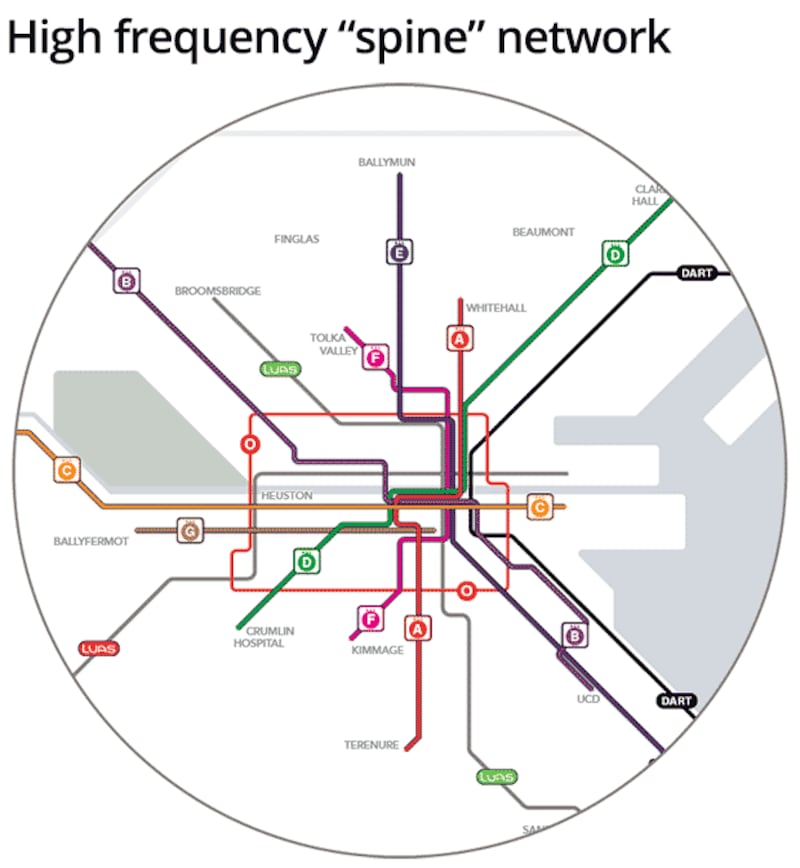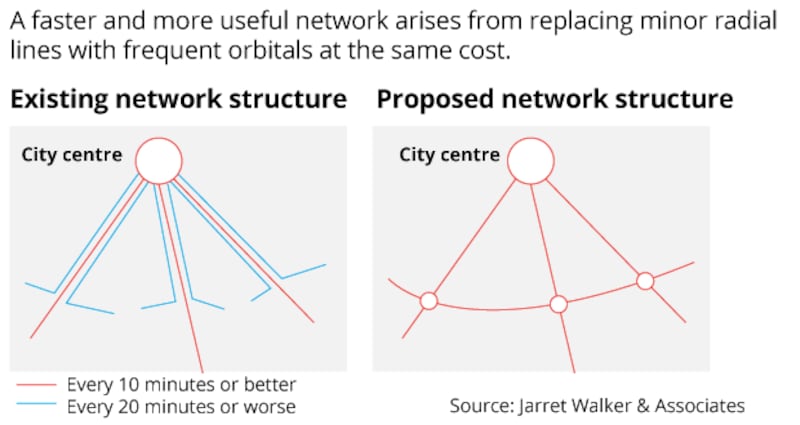Plans for a complete redesign of the Dublin Bus network, and the introduction of a once-off fare for all the city's public transport services, have been published by the National Transport Authority (NTA).
The first complete overhaul of the capital’s bus services will see decades-old routes axed and the introduction of new itineraries, which the NTA said will result in more frequent, reliable and integrated services.
However, a number of trips, that are currently direct, will require changing buses, and some passengers living in outer suburbs will have to take more than one bus to reach the city centre.
Last month the NTA published plans to upgrade 16 core bus corridors, with dedicated lanes and segregated cycling facilities. However the redesign of the network will affect every bus route in the city.


At its most basic, the current numbering system for all buses will be scrapped. A new lettering system from A to G will identify seven “spines” though the city, with buses running every four to eight minutes. Numbers would be used to indicate different branches of a spine; for example while all “A” buses would pass through Terenure, the A1 would continue to Knocklyon while the A2 would go to Tallaght.
There would also be a radical expansion of orbital services, not running through the city centre, that would also run frequently. Currently orbital services in Dublin are very limited, with passengers often having to travel into the city and then return in a similar direction to access a neighbouring suburb.
A high frequency inner orbital route, line O would run on a loop between the canals to enable fast travel around the city centre.
At the outer edges of the city, beyond the M50, infrequent, slow radial routes running all the way into the centre would be scrapped and replaced by short, frequent local routes that would feed into the spines that do serve the city.
The document acknowledges that this would mean some passengers would have to change buses to reach town. However, it claims that changing buses will actually result in a faster journey.
“In the proposed network some trips that are now direct will require changing buses; but because the frequency is so much higher, waiting time is reduced so much that the total trip is faster.”
It does recognise there “is still an inconvenience” and said it will minimise the number of cases where multiple bus changes are needed.
“Within the M50 almost all of Dublin still has direct service to the city centre. All of Dublin is no more than one interchange away from the city centre.”
There will be few trips requiring any more than two bus changes and three would be the maximum, it said.
Under the new fare structure there would be no penalties for changing buses, or for switching between bus, Dart and Luas. A new 90-minute fare would allow passengers to use any combination of these services for one price, while a short distance fare would be in place for particularly small journeys.
In addition to the new lettering and number system, all routes will be identified to distinguish frequent from infrequent services and peak-only from all day services.
The overall amount of bus services would increase by more than a quarter the NTA said. Almost one million people will be within 400 metres of a bus service operating every 15 minutes or better, an increase of about 30 percent on current numbers, while 650,000 will be within 400 metres of a service operating every 10 minutes or better, an increase by 35 per cent, the NTA said.
Submissions can be made on the plans from July 16th for nine weeks. The new network is expected to be in place in late 2019.













